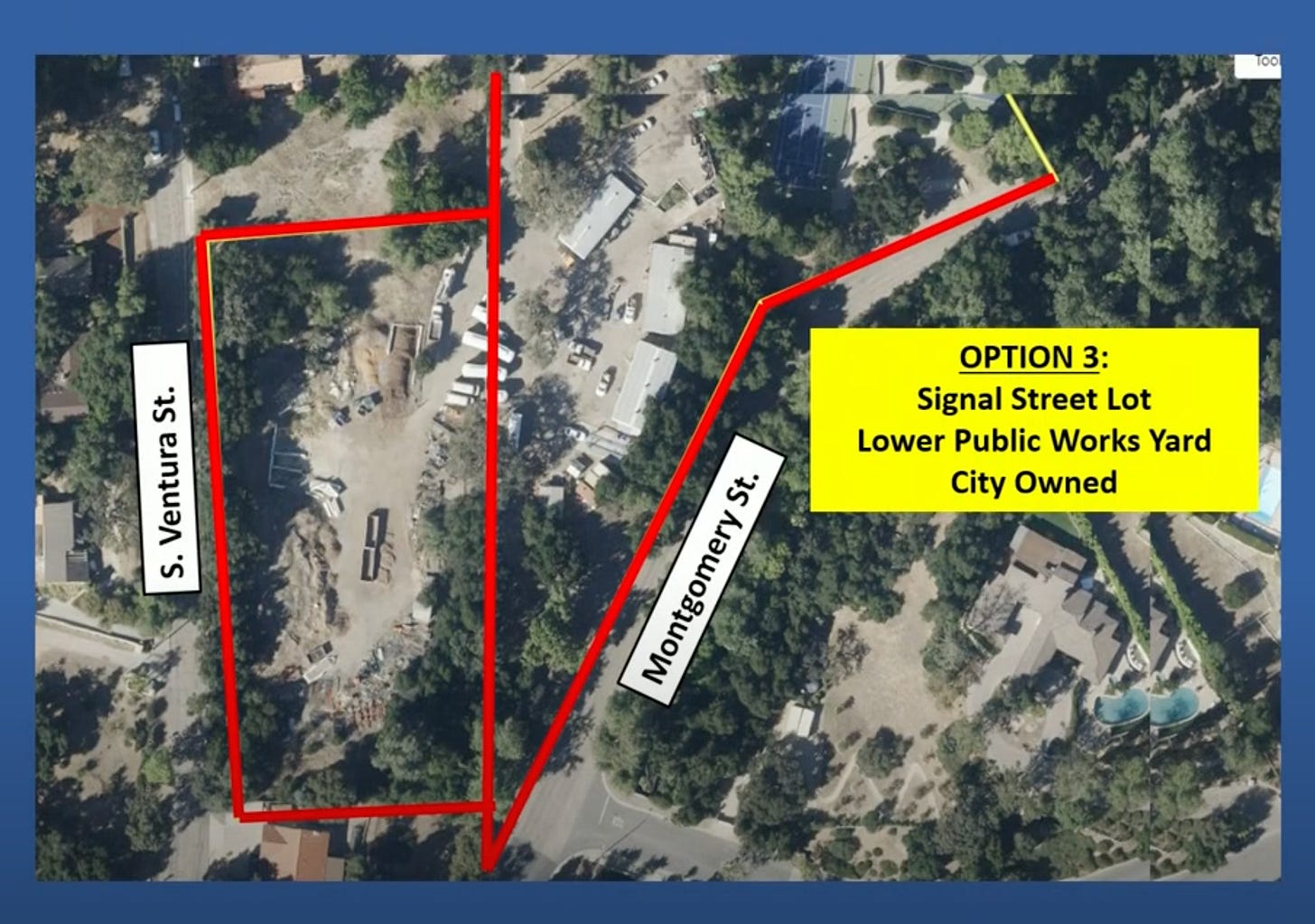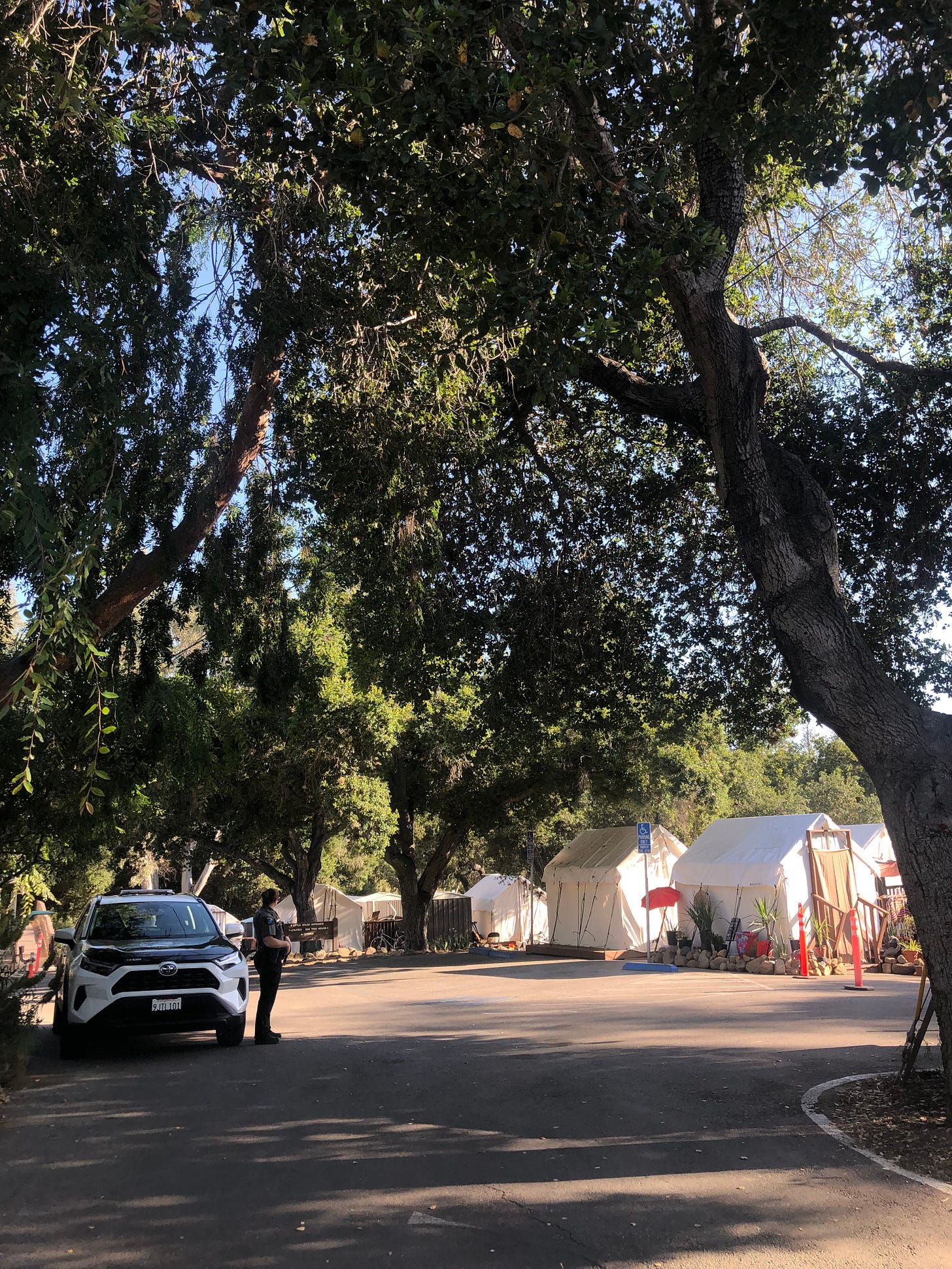Ready or Not: Ojai Settles on a Housing Site for the Homeless
Some residents of Ojai's Tent Town may move to a state-funded permanent supportive housing project in the City's public works yard.
Greetings Readers! I have an important update to share: Ojai’s $12.7 million state-funded housing project for chronically homeless community members finally has a location.
The new site — the City’s public works storage yard — is just down the road from Ojai City Hall. Remember: City Hall (specifically Kent Hall) plays host to Ojai Tent Town (OTT), a camp inhabited by 361 chronically homeless community members. Many of these campers will eventually take up residence at the public works yard location, once developed.
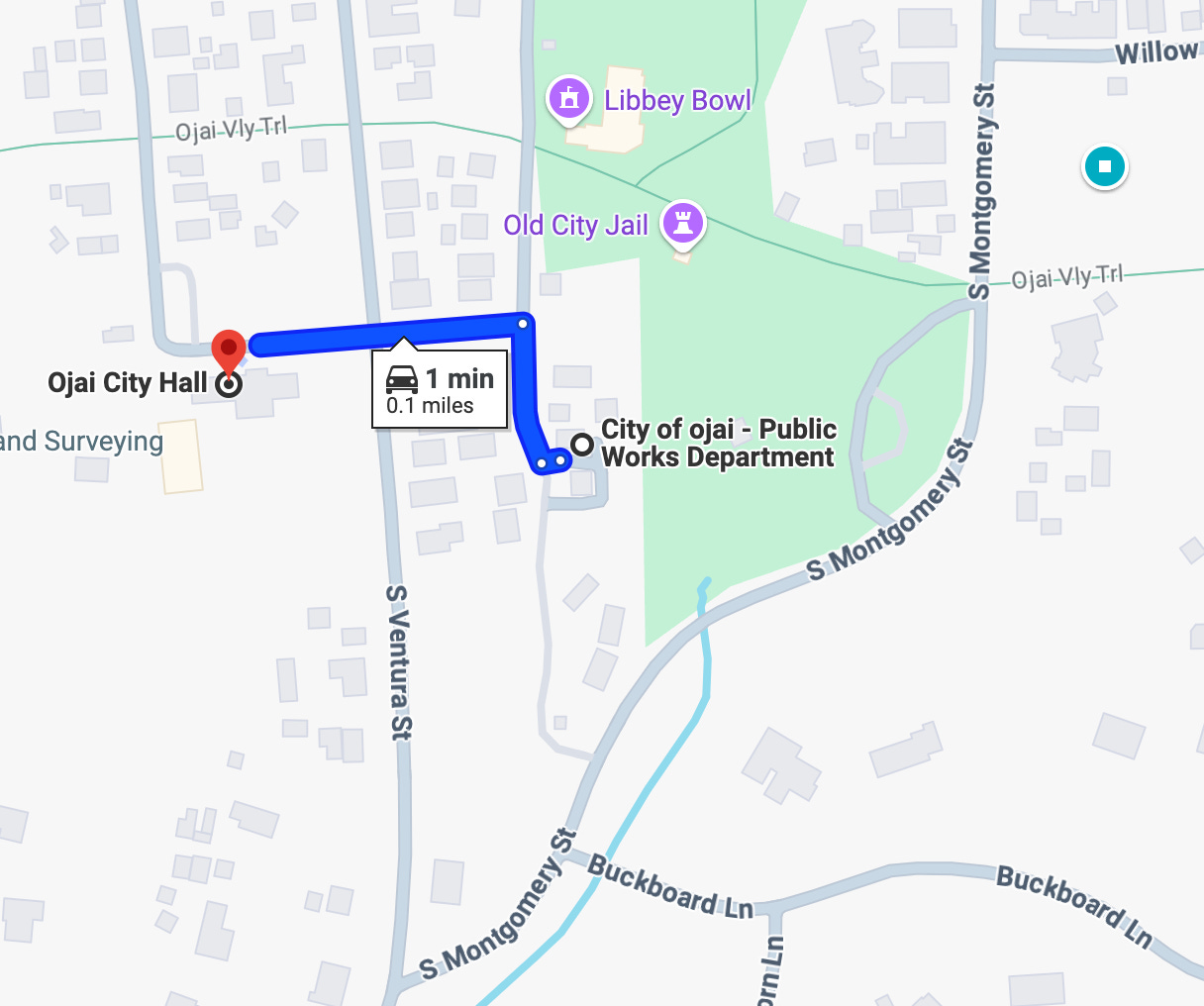
The public works yard — currently an active work site — is a little over an acre in size, according to Ojai City Manager Ben Harvey. Harvey described the site, which sits between South Ventura Street and South Montgomery Street as “a graveyard of broken items.” He also characterized the site as a “non-toxic junkyard.”
In addition to a giant mound of dirt and a collection of Ojai Trolleys, the site features a stand of oak trees, which help shield it from the view of surrounding neighbors. It’s currently fenced off from the public and it does not have an address.
Here’s an image of the location, provided by the City. “[The site includes] most of the rectangle on the left with a little bit of the triangle as well, Harvey said. He acknowledged, “it’s not a great representation.”
Here are a few images of the public works yard as it exists today:
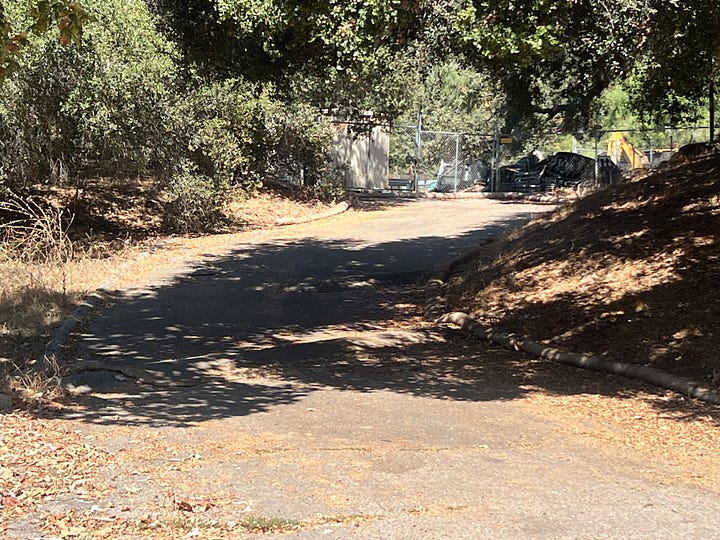
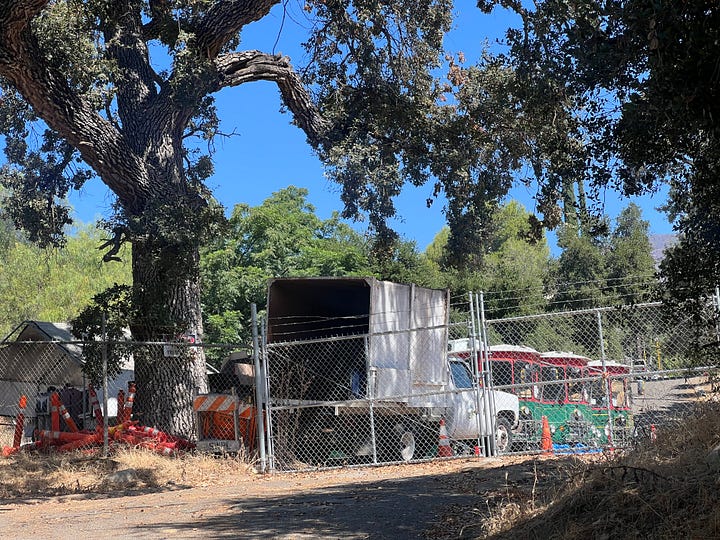
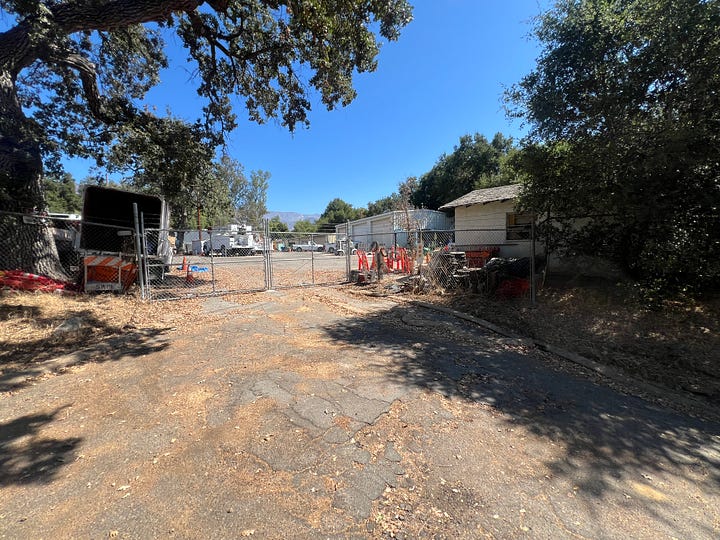
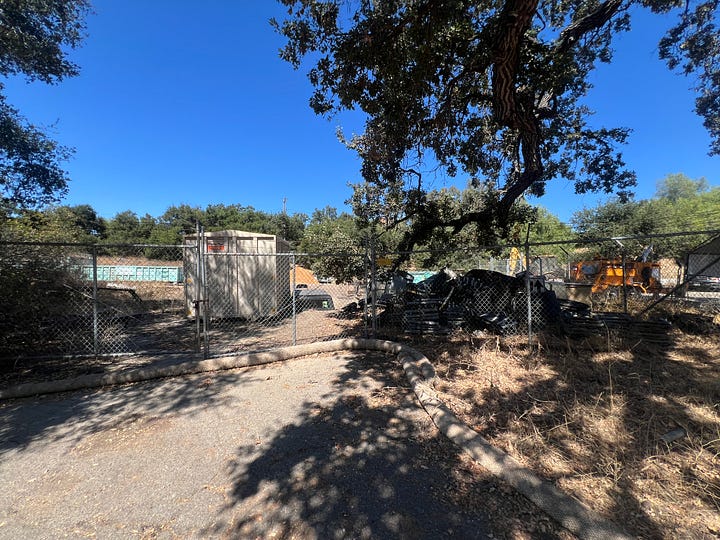
Alright — let’s discuss how we got to this point. In my last update, we learned that the Ojai Valley Board of Realtors was tasked by the City with locating a suitable location for the project. This was after the proposed 601 E. Ojai Avenue location became unfeasible (following an alleged “double cross,” according to the property owner). According to Board of Realtors President Sharon Maharry, her group began its search with a list of nine potential options (see below.)
“After speaking with all of the property owners that we could reach, we found out that a number of them were not willing to sell,” Maharry explained. “Then we were informed by City Manager [Harvey] that he didn't believe the Bryant Place/[Bryant] Circle properties were going to be supported by the City Council because they didn't want any more residential use in the industrial zone.2 That left us with three properties, and the City Manager added Rotary Park3, which took us to the final four.”
On Tuesday, August 27th, the community and Council met at Kent Hall to debate the options. Many of the housing project’s future residents were camped just outside the meeting, in the parking lot.
The neighbors of the four potential sites were near-uniformly displeased with the prospect of adding a housing project populated by formerly homeless individuals to their neighborhood.
“Placing homeless housing on a main street of Ojai is just simply not acceptable,” said Lila Francese, who identified herself as the next-door neighbor to the proposed E. Ojai Avenue location. “I just don’t think it’s something that we should have people who are driving to our town and paying a ton of money to come here and support our local businesses; I don’t think that’s the first thing they should see when entering.”
Francese was far from the only speaker to evoke the tourist economy and the housing development’s alleged incompatibility with Ojai businesses. This argument also featured in the debate over the doomed 601 E. Ojai Avenue location.
“The East Ojai Avenue location is on the main drag of our beautiful tourist town and across the street from two lovely hotels,” added Kendra Yoes, outlining her resistance to the E. Ojai Avenue option.
Another concern conjured by speakers was the project’s potential proximity to children. One of the proposed sites is adjacent to a preschool and across the street from Nordhoff Junior High and High School.
Delaney Labarre, a City Hall neighbor, had little tolerance for this argument: “This is not a community of pedophiles; this is a community of people who need a leg up!” I find that to be really bogus — it’ll be fenced. There’s security.”
Next came Gordon Clauson, an E. Ojai Avenue neighbor, who introduced himself as an “unabashed NIMBY.”
“It’s rich hearing someone who lives two blocks from the encampment saying somebody else should have it,” he said, addressing the assembled public. Clauson, too, spoke of safety concerns. “I worked for 36 years in Ojai Hospital’s emergency department. I personally treated assault victims from within the current homeless encampment. They also described to me the wanton destruction of their meager property by one of their own… How can I not advocate against bringing exposure to this kind of trouble to within three doors of my own home?”
Casey Abbott, an OTT resident, shared a different perspective. “The people who need to be concerned about safety are us, those that live in the camp. We’ve had rocks thrown at us. We’ve had tree stakes, six feet long, two inches in diameter, with pointed ends, thrown at the tents.” Abbott shared that he became homeless as a result of the Thomas Fire, which destroyed his home and business back in 2017.
Abbott added his own — rather disturbing — concerns about evicted campers. “I don’t think you have to be worried about pedophiles; we have none. The one pedophile who has already been kicked out — he has multiple problems — is now wandering around Ojai… where they go after they’ve been kicked out of the program is a very, very big concern for everyone in Ojai. Us, you, homeowners, everybody.”
Those speakers who spoke in support of a particular location generally agreed that the public works yard was the best option. Dale Hanson, a Board of Realtors member, acknowledged that each of the four locations “have problems,” but the public works yard “seems to be the most favorable.”
Ruth Miller, a member of Ojai’s Unhoused Taskforce4, testified that the public works yard was a good option due to its proximity to town, the HELP of Ojai food pantry, and the fact that the property is surrounded by trees. She also acknowledged the Council’s current legal reality:
“Since The Supreme Court has dismantled the Ninth Circuit [Court] ruling, [the City Council] could have told everyone to pack up their tents and leave,” Miller said. “I cannot imagine the fear that people are experiencing in other communities, where the leadership is not as sympathetic.”

Keep reading with a 7-day free trial
Subscribe to Local Hero to keep reading this post and get 7 days of free access to the full post archives.

